Snatcher (Konami) - 1988
This review is part of the “Let’s Adventure!” series. See all reviewed games sorted by rating here.
Snatcher is a cyberpunk graphic adventure game developed and published by Konami. It was written and designed by Hideo Kojima and first released in 1988 for the PC-8801 and MSX2 in Japan. Snatcher is set in a future East Asian metropolis where humanoid robots dubbed “Snatchers” have been discovered killing humans and replacing them in society.
The game follows Gillian Seed, an amnesiac who joins an anti-Snatcher agency in search of his past. Gameplay takes place primarily through a menu-based interface through which the player can choose to examine items, search rooms, speak to characters, explore a semi-open world, and perform other actions.
Part of the fun for me in playing these games is getting to mess around with new emulators. I’m using an old MacBook Pro to play most of these games, so I figured I’d give OpenEmu a try since I have a couple Sega CD games on my list and this emulator is only available for OSX.
Typically I’d play console games on Android using Ex Plus Alpha (which I did for Shadowgate). I’ve bought all the emulators (NES.emu, SNES.emu, etc) and have been using them for years, but one features I’ve really wanted was the ability to record playtime. I went so far as to open an issue in GitHub for it in 2015, but this never got any traction.
OpenEmu appears to support this out of the box, which was a very pleasant surprise. Furthermore you can easily remap the keys for quick save/load, fast forward, rewind and taking a screenshot which I found extremely convenient. I will most likely be using OpenEmu for any future games that it supports as I find the interface and experience a lot better than other multi-emulator systems (such as RetroArch).
Similar to ICOM Simulations type games, Snatcher is predominantly a visual novel. You’re presented with a number of actions you can perform on each static screen that allow you to learn more about your surroundings or interact with a character. You’ll find yourself having to go through the motions of LOOKing at everything available, then INVESTIGATE-ing everything you just looked at, then repeating because you may have uncovered new options to perform these 2 actions on.
It felt a little redundant initially, then as the game dragged on it actually detracted from the experience. I understand the intent of the selected verbs and how they’re supposed to differ, but from a game design perspective it’s not really adding anything meaningful.
The version of the game I played had most character interactions fully voice acted. You’d be presented with a view of the scene that took up about 70% of the screen, with the lower third split into three square where character portraits could be displayed. These portraits would be slightly animated as the characters were speaking so you’d know who was talking, and honestly the voice acting for every character was pretty good.
This game is for a mature audience, as there are multiple scenes that some players might find a bit more gory than they might like. As the story unfolds, you’re investigating the murder of one of your fellow Junkers. In this world, the Junkers are sort of like “blade runners” that are tasked with hunting down Snatchers (which if you’re familiar with Blade Runner are just replicants).
You progress the story by traveling from location to location, MOVE-ing about and LOOKing/INVESTIGATE-ing everything. Depending on where you are and what you’ve just interacted with, you may uncover some evidence. When this happens, you’ll call it out with a closeup of the item in question which will then be added to your inventory.
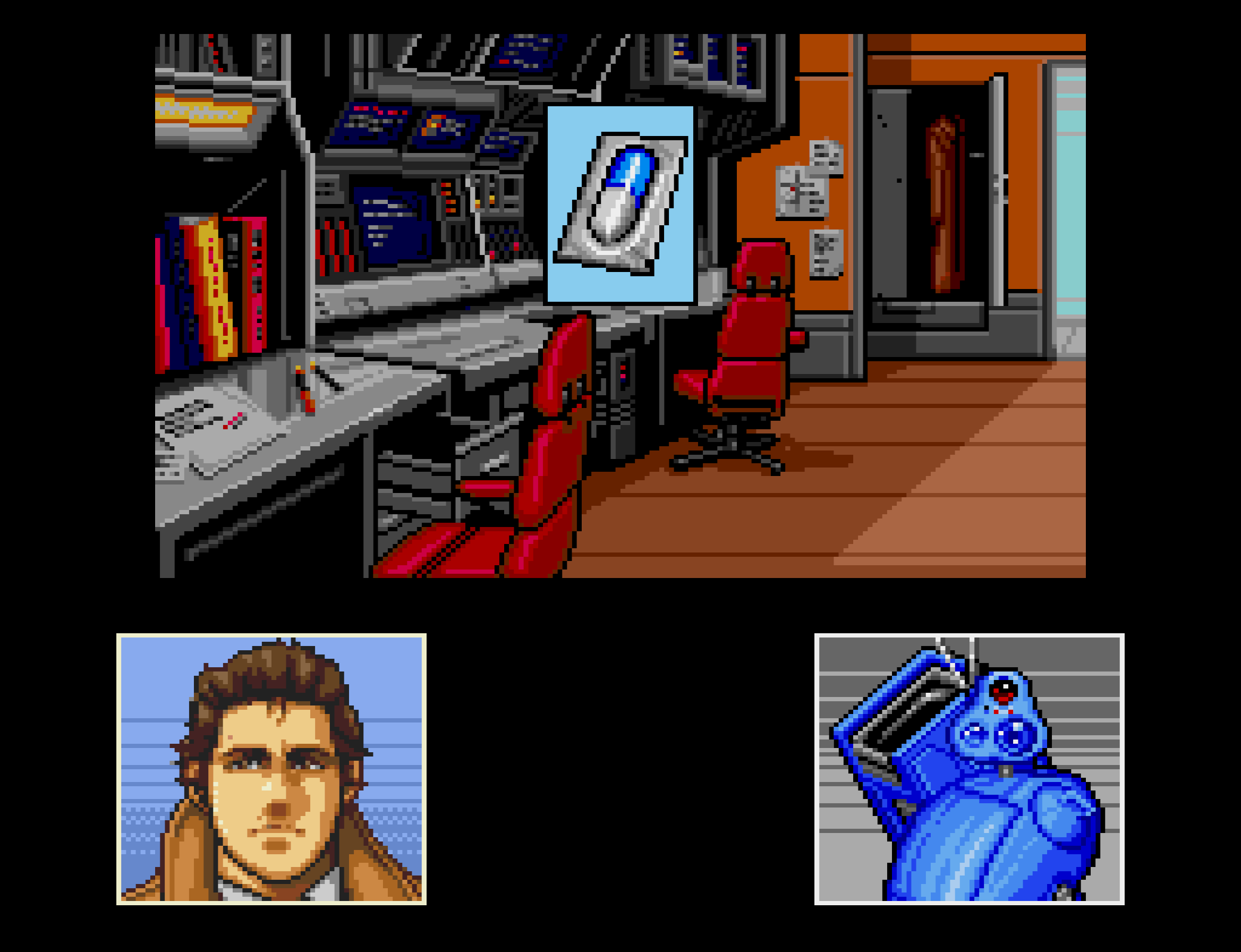 Whatever this is I should probably hold onto it
Whatever this is I should probably hold onto it
Gillian acquires a limited number of inventory items throughout the game that can be used during character interactions (ex: money, Junker ID) but most of the items you find throughout the game are considered evidence. Both evidence and items can be used on characters you’re talking to, and you’ll likely find yourself trying literally everything on everyone to see what will work.
Throughout the game you’re accompanied by a robot companion named “Metal Gear”. By interacting with him you’re able to save your game, make video phone calls and perform certain environment interactions (like scanning for SNOW-9, scanning for movement or if it’s dark turning on a light). Metal Gear will also nudge you along with some hints as to where you should go next or what you might want to try on a certain screen.
Aside from the usual “go from screen to screen mashing through all menu options”, there are a handful of puzzles you’ll need to complete. At one point you need to create a reconstruction of a suspect based on the descriptions provided by someone you interview. This is … painful. Technically you could just keep trying all possible combinations until you get it right but that will take forever! This was very much a section I relied on the walkthrough for.
Unlike visual novel style games, Snatcher also includes arcade sequences. These areas involve having to move the cursor around the screen and shooting robots before they shoot back. Honestly they’re not too challenging, and if you happen to die the game lets you resume at the screen before the sequence began. This is beneficial as I forgot to save for a while when I got to this first section and got myself killed pretty quickly :P
The content of this game is much more mature, and Gillian has conversation options to basically hit on every woman you meet. Apparently the Sega CD release censors some of the graphics and removes some of these options, but there’s enough in there to give you a good idea as to what kind of a guy the main character is.
A lot of these conversation options are hidden until you INVESTIGATE the same option multiple times (sometimes a few dozen times).
This is actually one of my biggest complaints about this game. There are too many sequences that won’t advance until you repeat the same option many times until a new selection becomes available in the menu. Often the feedback you get from Gillian or Metal Gear will be the same for many of those selections so it’s not obvious that they’re waiting for you to keep repeating the option.
Overall this game was a pleasant surprise. The story is really compelling and well structured, and though it can be challenging to get it to progress in certain areas, it’s generally an intuitive game to play.
I’m a huge fan of cyberpunk in general, and I like visual novels and menu driven games so Snatcher sort of hit a number of gaming sweet spots for me. The music is atmospheric and adds to the experience nicely, and the voice acting quality was better than I would have expected.
For anyone looking for a story that feels like it’s in the Blade Runner universe, look no further than Snatcher.
Game Information
| Game | Snatcher |
| Developer | Konami |
| Publisher | Konami |
| Release Date | November 26, 1988 |
| Systems | NEC PC-8801, MSX2, PC Engine Super CD-ROM, Sega CD, PlayStation, Sega Saturn |
| Game Engine |
My Playthrough
| How Long To Beat? | 8 hours |
| Version Played | Sega CD via OpenEmu > Genesis Plus GX |
| Notes | Walkthrough |
Score
See here for a refresher on how we’re scoring these games.
| Atmosphere (20) | 14 |
| Story (25) | 16 |
| Experience (15) | 6 |
| Impact (10) | 7 |
| 61% |
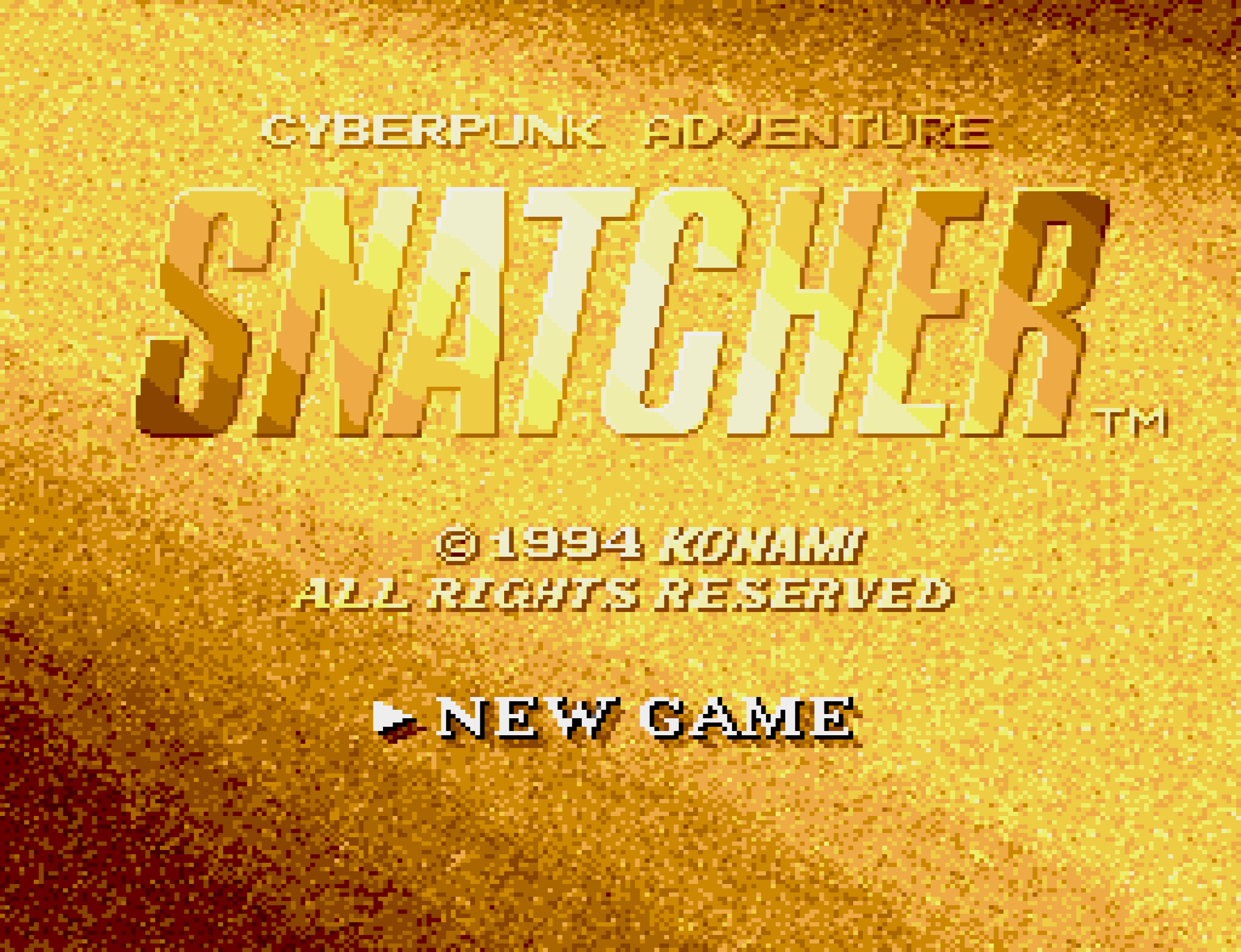
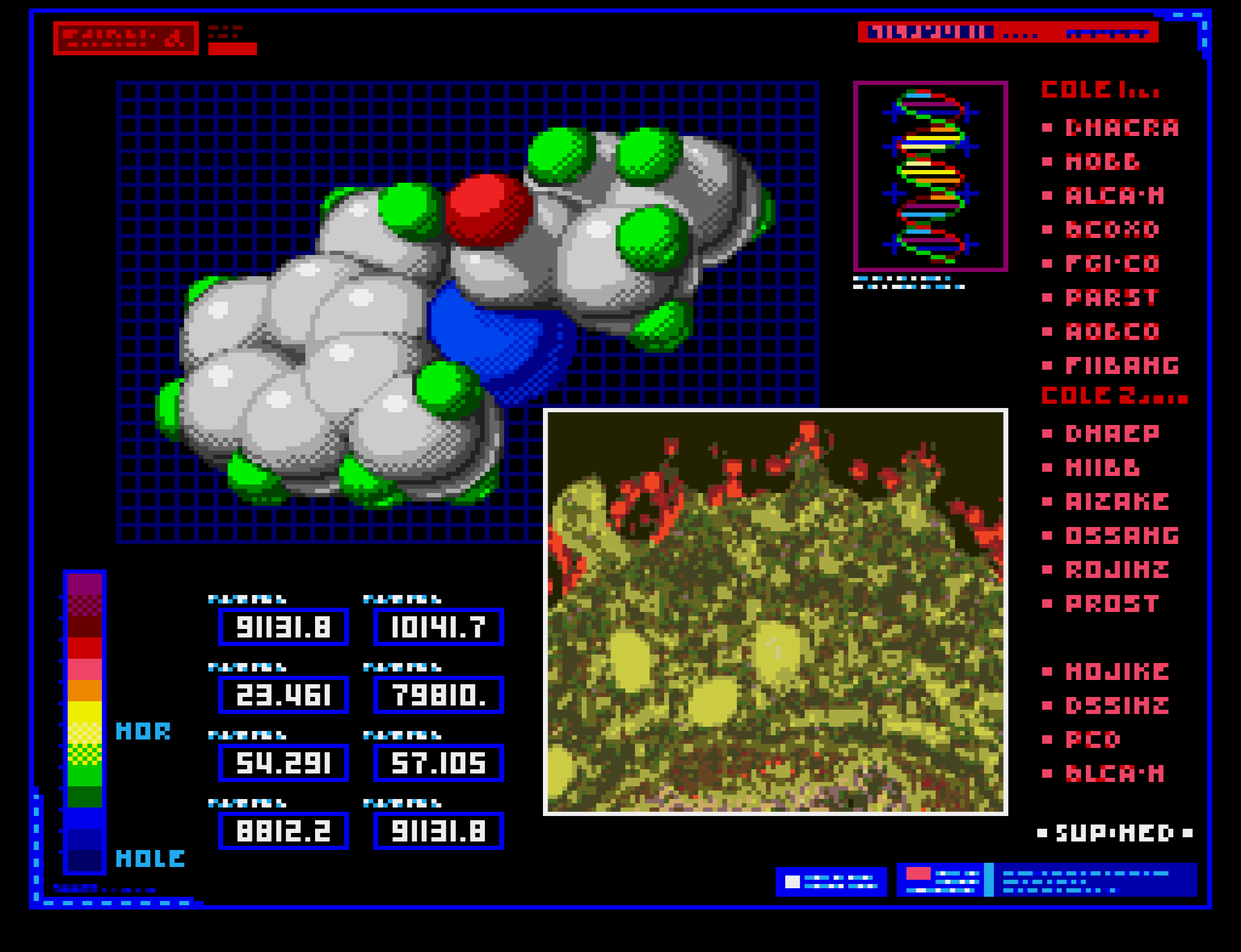
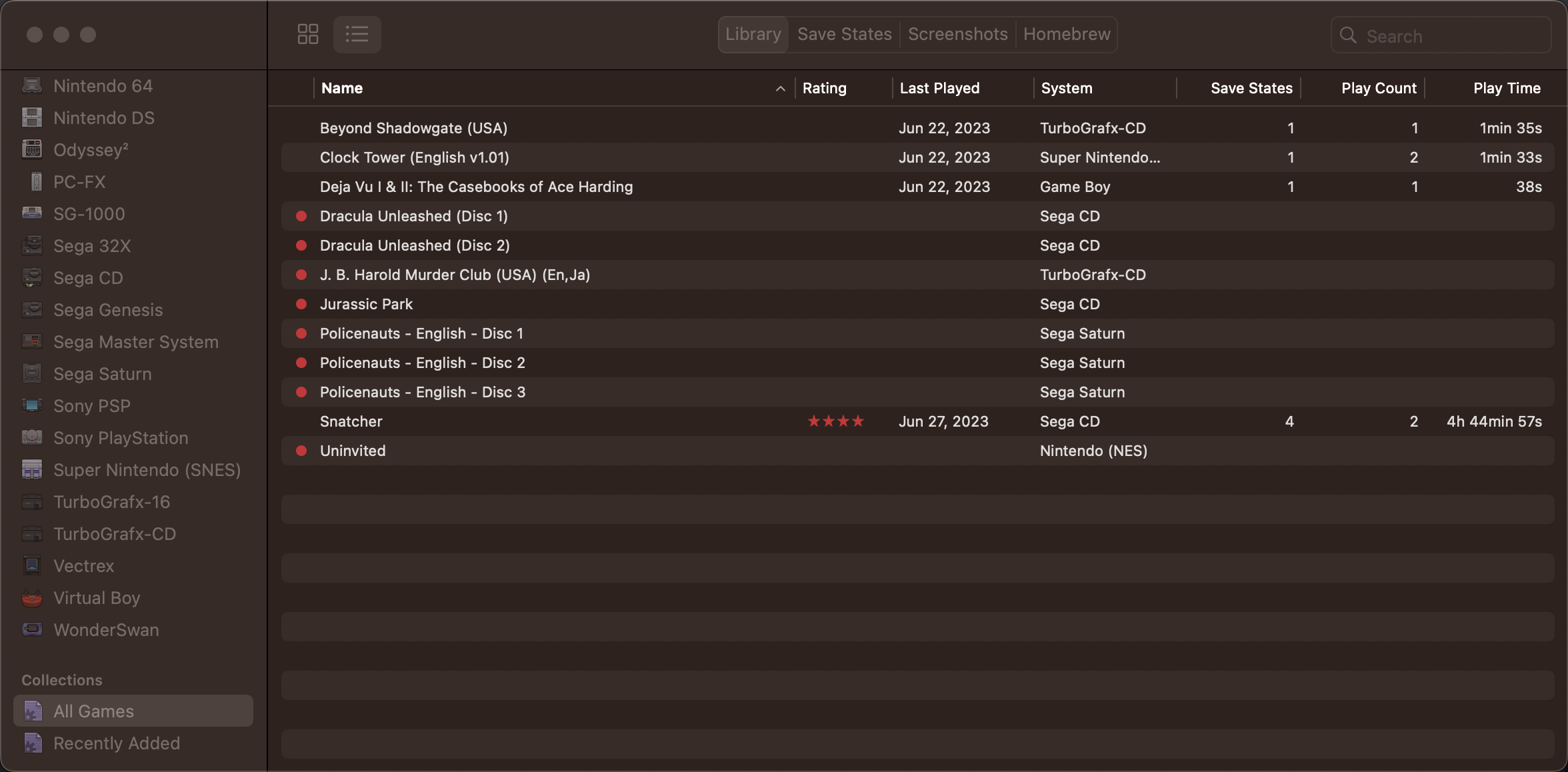
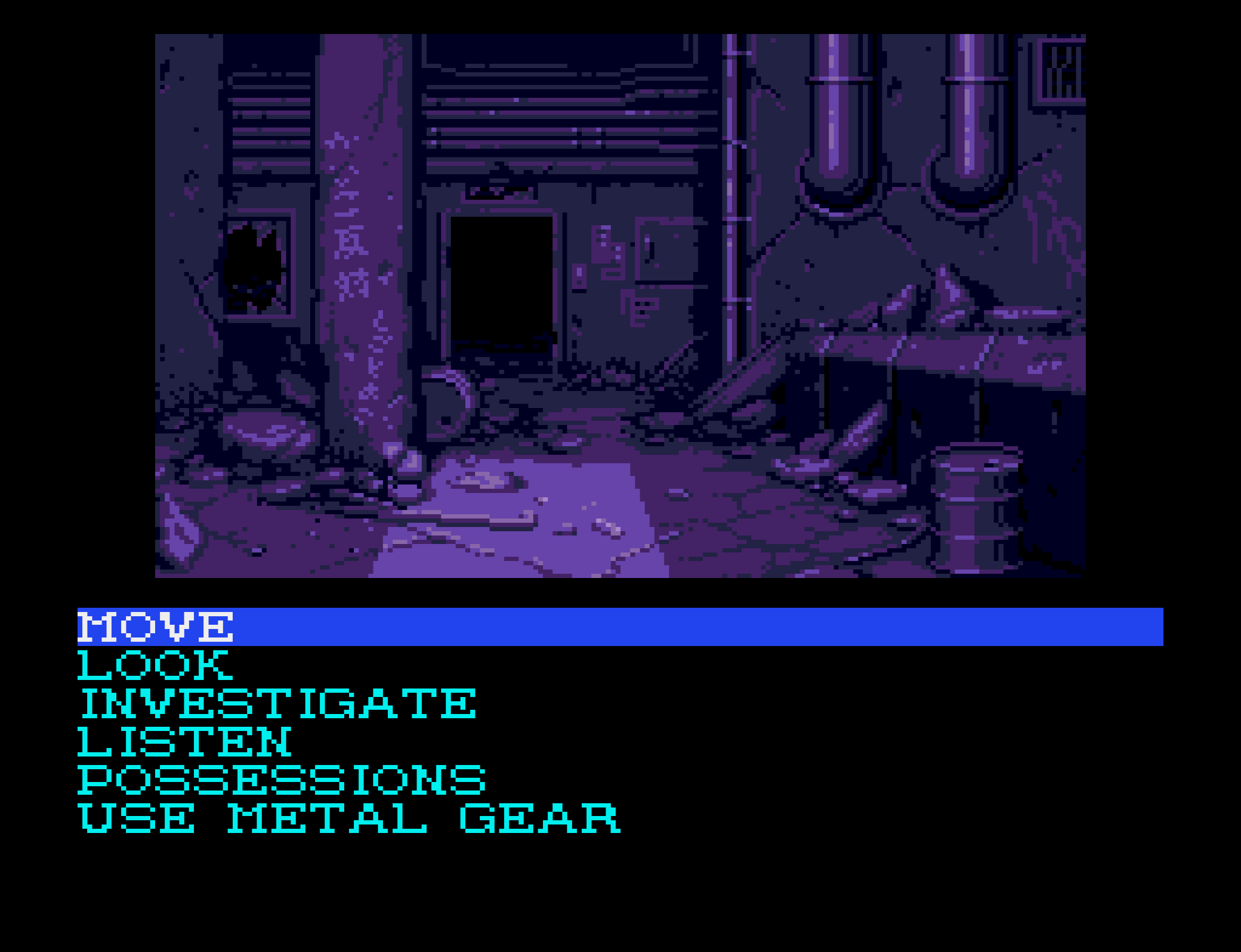
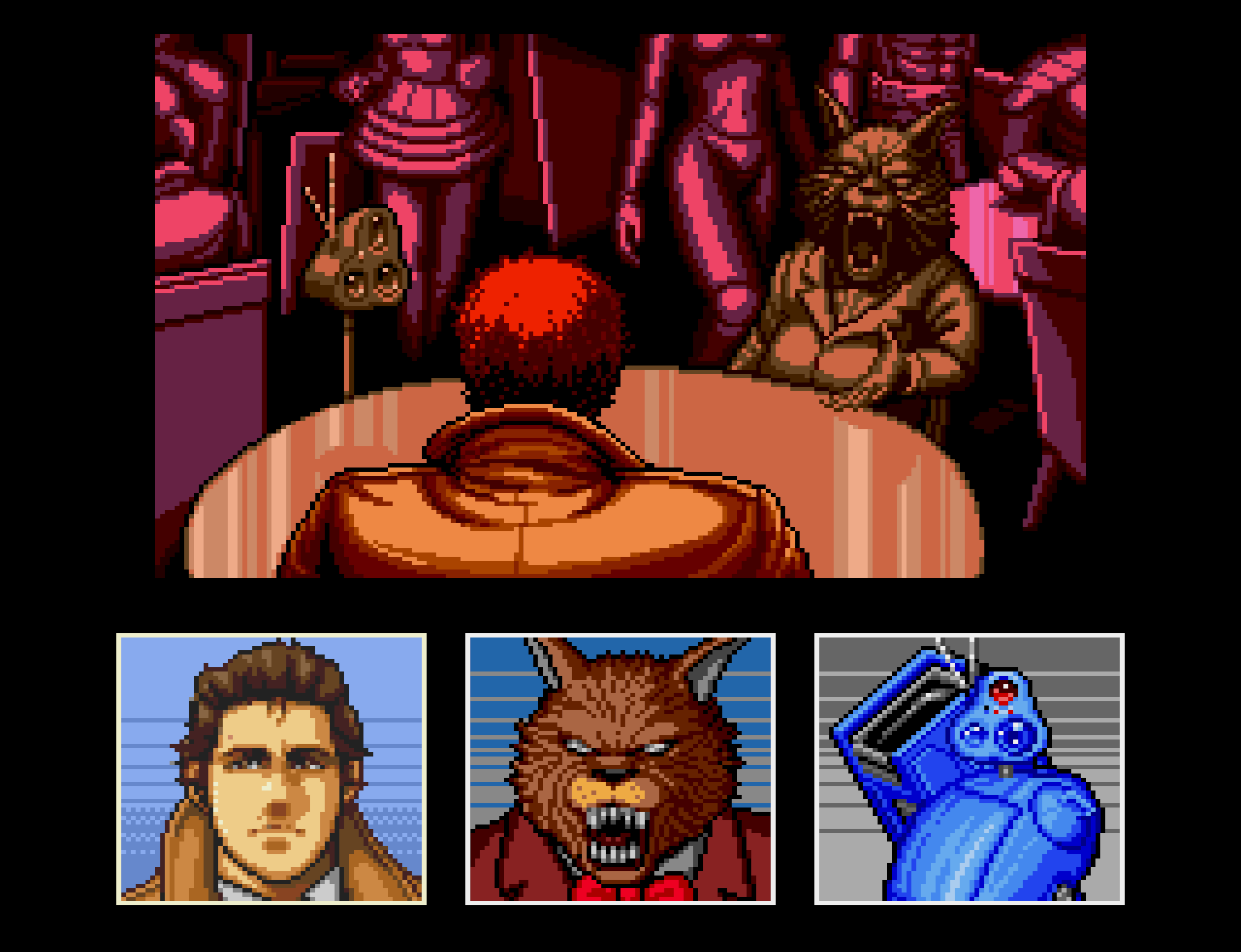
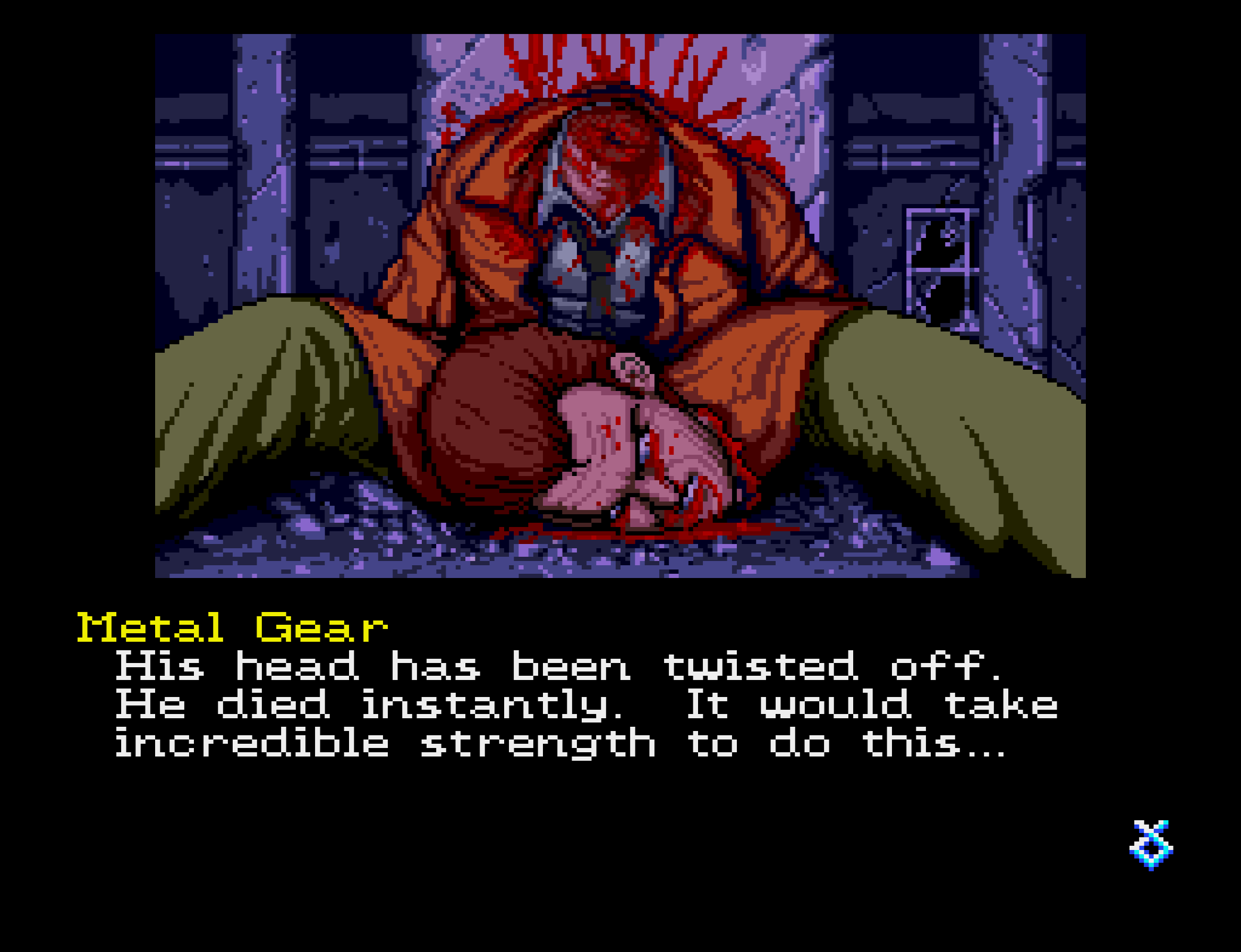
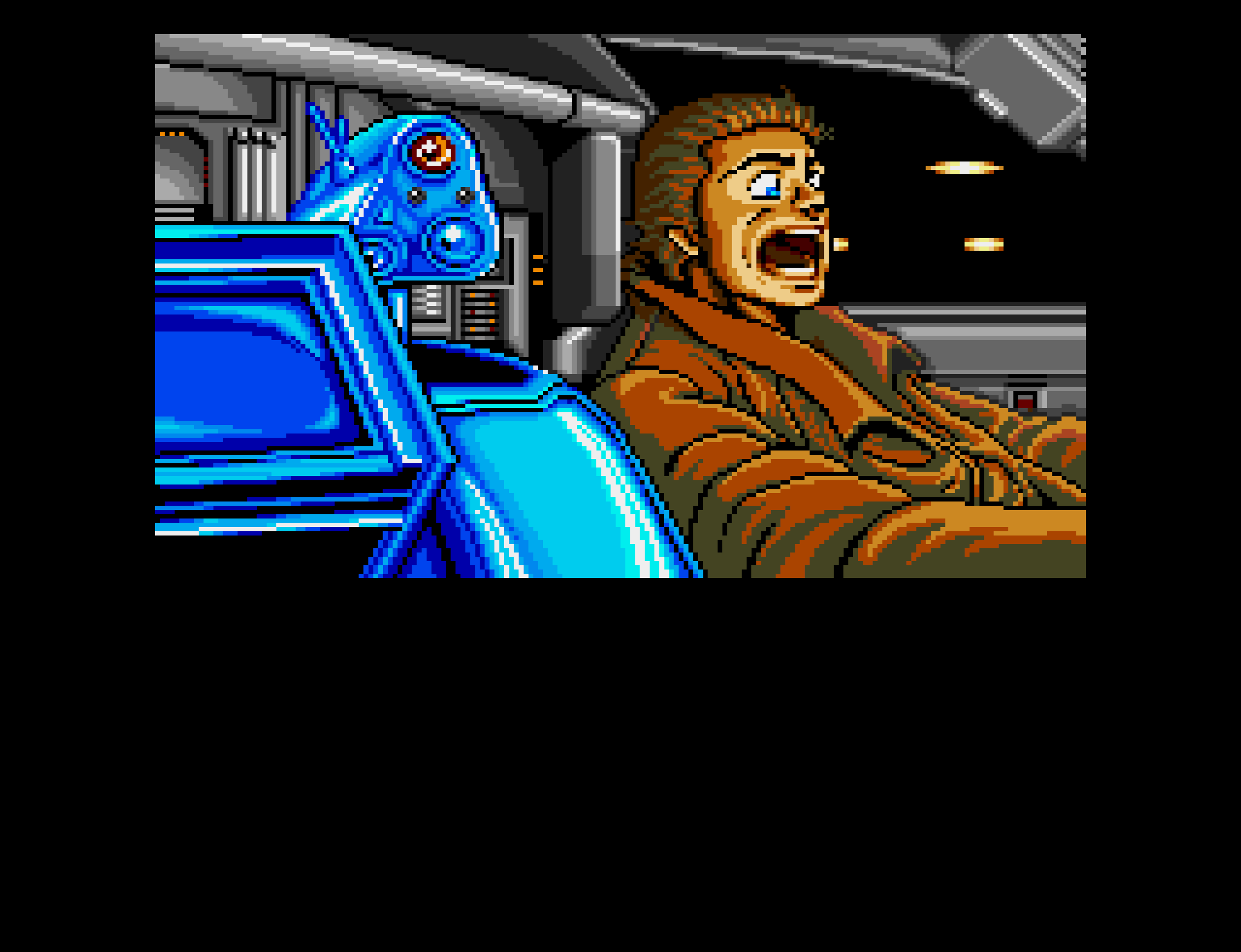
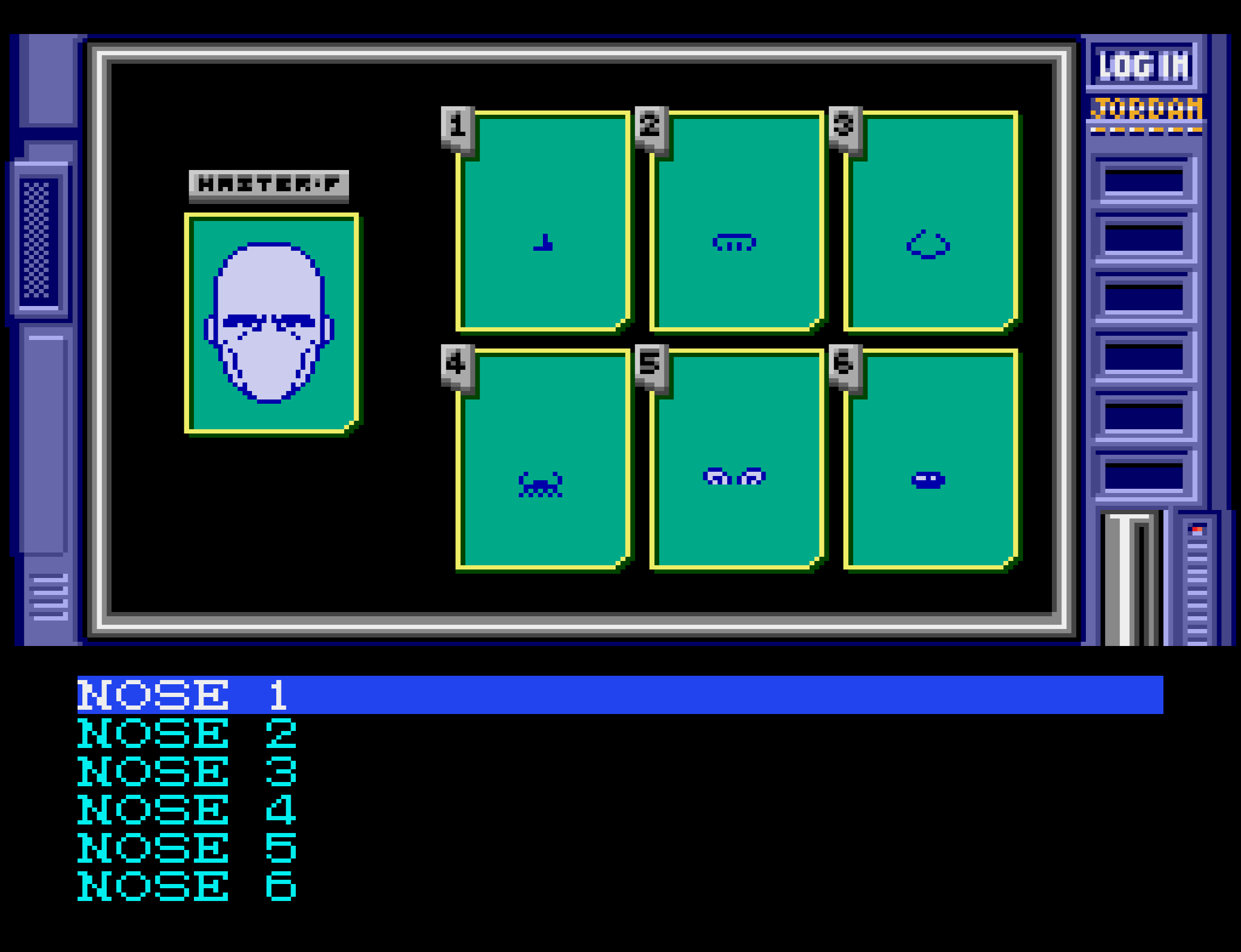
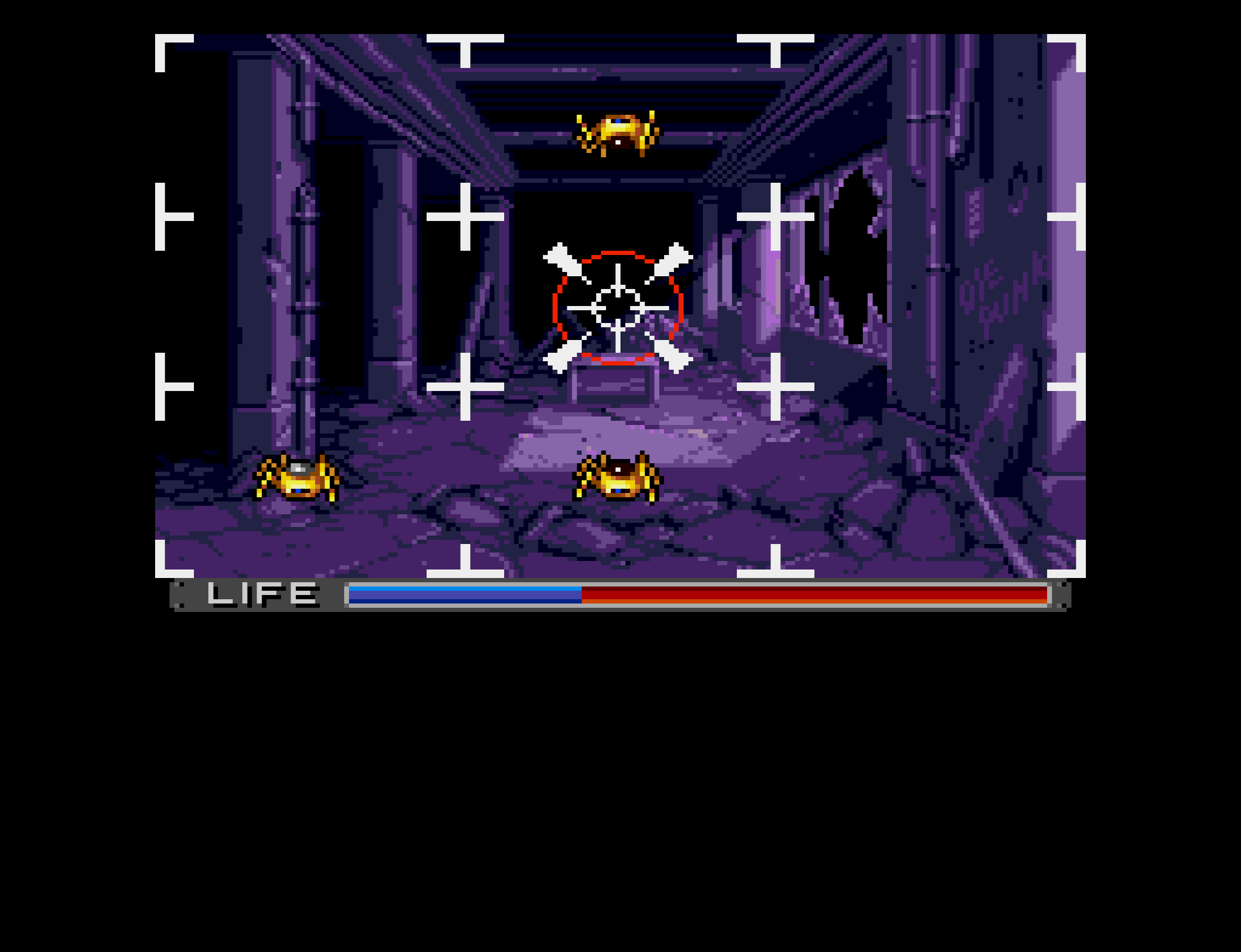
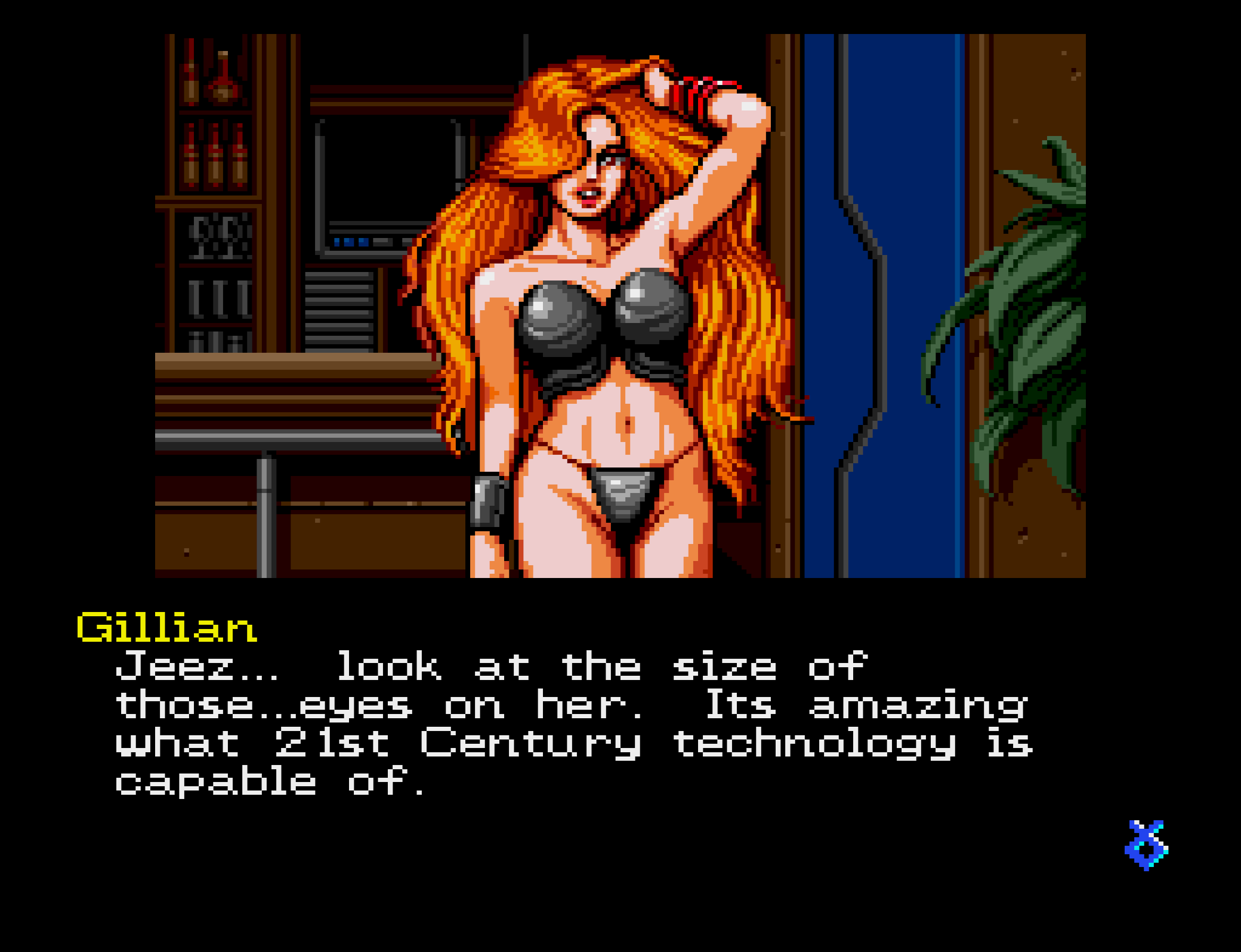
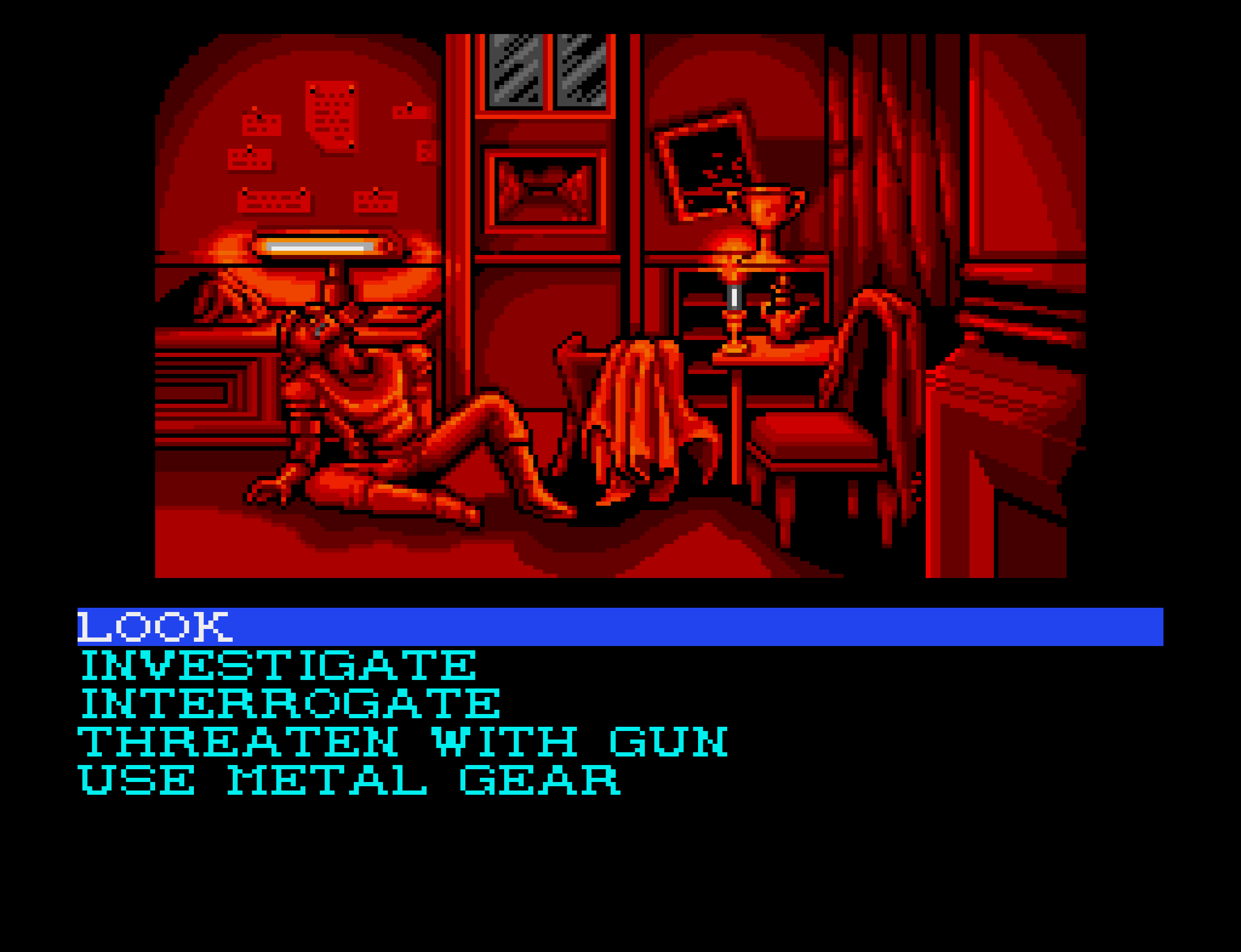
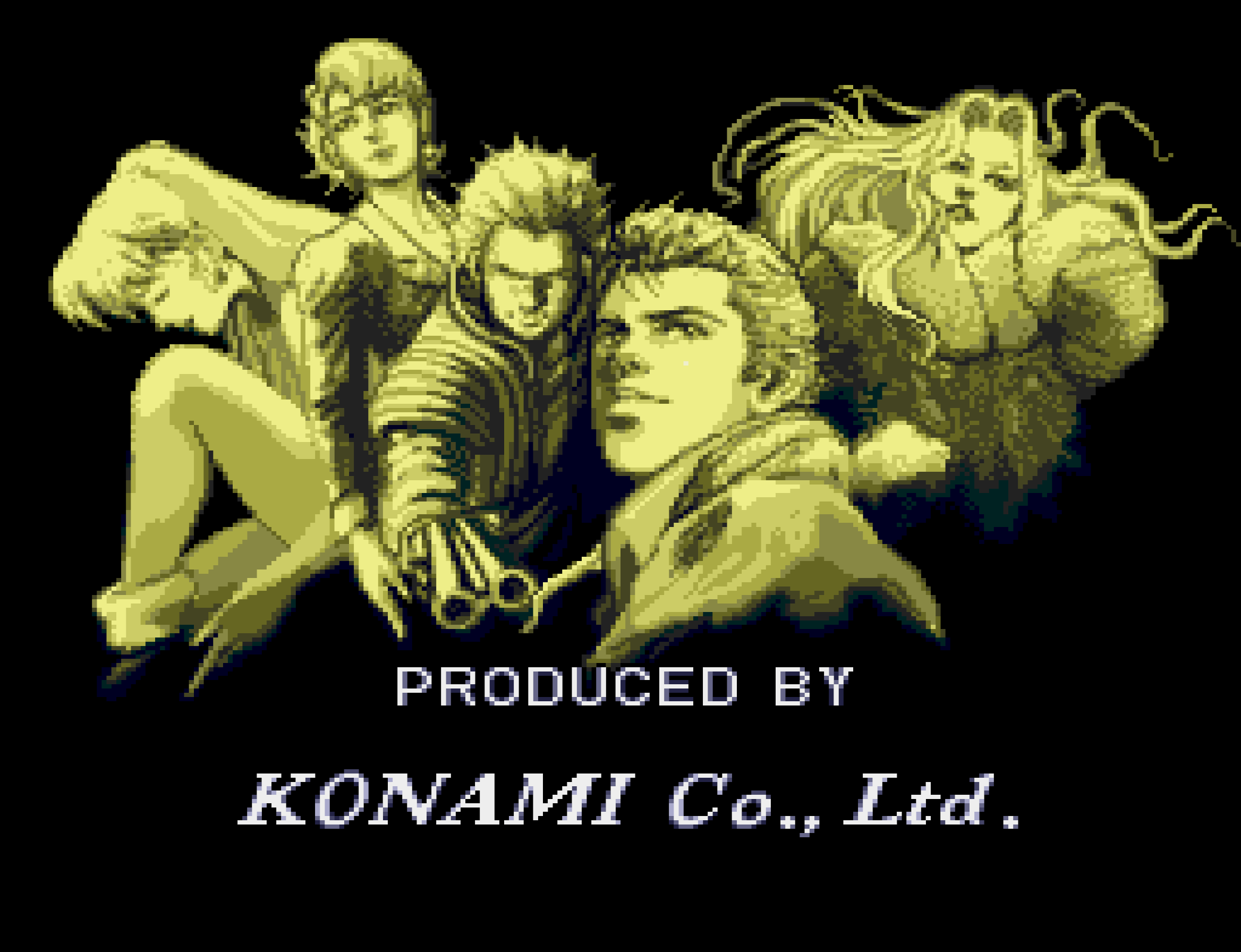
Comments powered by Disqus.